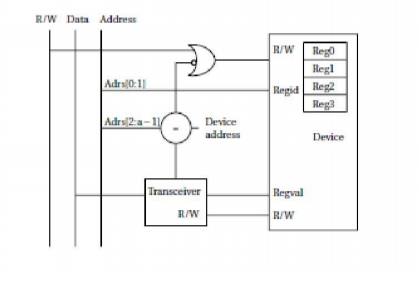Chapter: Embedded Systems
Component Interfacing: Memory and Device Interfacing
COMPONENT INTERFACING
Building
the logic to interface a device to a bus is not too difficult but does take
some attention to detail. We first consider interfacing memory components to
the bus, since that is relatively simple, and then use those concepts to
interface to other types of devices.
Memory Interfacing
If we can
buy a memory of the exact size we need, then the memory structure is simple. If
we need more memory than we can buy in a single chip, then we must construct
the memory out of several chips. We may also want to build a memory that is
wider than we can buy on a single chip; for example, we cannot generally buy a
32- bit-wide memory chip. We can easily construct a memory of a given width (32
bits, 64 bits, etc.) by placing RAMs in parallel.
We also
need logic to turn the bus signals into the appropriate memory signals. For
example, most busses won’t send address signals in row and column form. We also
need to generate the appropriate refresh signals.
Device Interfacing
Some I/O
devices are designed to interface directly to a particular bus, forming
glueless interfaces. But glue logic is required when a device is connected to a
bus for which it is not designed.
An I/O device typically requires a much smaller
range of addresses than a memory, so addresses must be decoded much more
finely. Some additional logic is required to cause the bus to read and write
the device’s registers. Example 4.1 shows one style of interface logic.
Example
A glue
logic interface
Below is
an interfacing scheme for a simple I/O device

The device has four registers that can be read and
written by presenting the register number on the regid pins, asserting R/W as required, and reading or writing the
value on the regval pins.
Related Topics